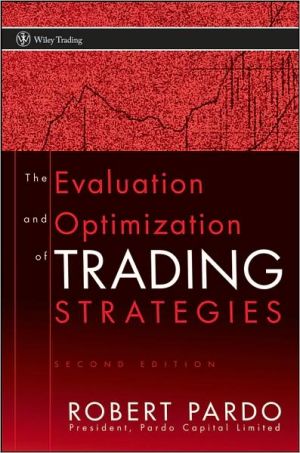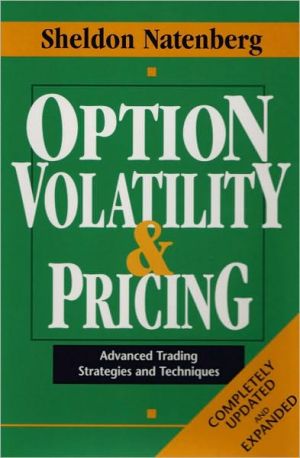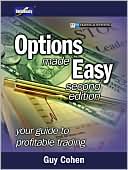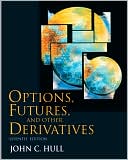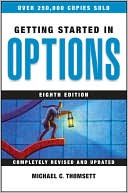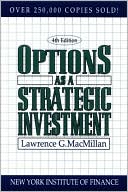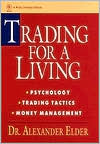Evaluation and Optimization of Trading Strategies
Praise For The Evaluation and Optimization of Trading Strategies, Second Edition\ "The testing process is key to a profitable trading method and Bob Pardo brings order and sanity to it. He shows the reader how to navigate the minefield of optimization and offers walk-forward testing as a way to change a static system into a dynamic one."\ —Perry Kaufman, author of New Trading Systems and Methods, Fourth Edition\ "Will your system work in the future? In this book Bob Pardo shows you exactly...
Search in google:
It would be an understatement to say that the world has changed dramatically in the sixteen years since the first edition of Design, Testing, and Optimization of Trading Systems was published in 1991. With all of the changes in communications, technology, and trading styles, a thorough and comprehensive working knowledge of how to properly design and test strategies has never been more important than it has become in today's extremely competitive markets. Robert Pardo argues that a trading strategy can only be properly evaluated and successfully traded when profit and risk have been measured precisely and accurately—which can only be done through computerized testing. In this updated and revised edition of his classic work, Pardo, a professional money manager and renowned expert in the design and testing of trading strategies and computerized trading applications, provides a clear-cut and specific road map for traders who want to transform a trading idea into a tested, verified, properly capitalized, and profitable automated trading strategy.Pardo shows that the benefits of correct testing and optimization vastly outweigh the effort required to learn and master their proper application, and sets forth in detail the correct way to formulate, test, and evaluate a trading strategy. He explains how to properly optimize a trading strategy, incorporate out-of-sample data in the testing of a strategy, perform Walk-Forward Analysis, develop a trading strategy profile, and judge real-time trading performance with respect to the trading strategy profile developed via historical testing. In addition, he identifies the symptoms of overfitting—optimization that has "gone bad" and resulting in false conclusions and offers guidelines to avoid it.The trading game has never been as large or as lucrative as it is today. Nor have the markets ever been more efficient than they are today. Yet traders the world over continue to make profits. Why? They have found an edge. For anyone planning to employ algorithmic or mechanical strategies in their trading, this book presents, in a straightforward and accessible style, the edge that you can use to obtain and enjoy the fruits of profitable trading.
Foreword. Preface. Acknowledgments. Introduction. Chapter 1. On Trading Strategies. Why This Book Was Written. Who Will Benefit from this Book? The Goals of this Book. The Lay of the Land. Chapter 2. The Systematic Trading "Edge". Discretionary Trading. Raising the Bar. Verification. Quantification. Risk and Reward. The Performance Profile. Objectivity. Consistency. Extensibility. The Benefits of the Historical Simulation. Positive Expectancy. The Likelihood of Future Profit. The Performance Profile. Proper Capitalization. A Measure of Real-Time Trading Performance. The Benefits of Optimization. The Benefits of the Walk-Forward Analysis. The Advantages of a Thorough Understanding. Confidence. Strategy Refinement. Chapter 3. The Trading Strategy Development Process. Two Philosophical Approaches to Strategy Development. The Scientific Approach. The Path of Empirical Development. An Overview of the Trading Strategy Design Process. Step 1: Formulate the Trading Strategy. Step 2: Translate the Rules into a Definitive Form. Step 3: Preliminary Testing. Step 4: Optimize the Trading strategy. Step 5: the Walk Forward Analysis™. Step 6: Trade the System. Step 7: Evaluate Real-Time Performance. Step 8: Improving the System. Chapter 4. The Strategy Development Platform. The Scripting Language. Diagnostics. Reporting. Optimization. The Objective Function. Speed. Automation. Walk Forward Analysis™. Portfolio Analysis. In Conclusion. Chapter 5. The Elements of Strategy Design. The Three Principle Components of a Strategy. Entry and Exit. Risk Management. Position Sizing. An Overview of a Typical Trading Strategy. A Trade Equals an Entry and an Exit. Entry Filters. The Management of Risk. Trade Risk. Strategy Risk. Portfolio Risk. The Management of Profit. The Trailing Stop. Profit Targets. Position Sizing. Advanced Strategies. Summary. Chapter 6. The Historical Simulation. The Essential Reports. The Performance Summary. The Trade List. The Equity Curve. Performance by Period. The Importance of Accuracy. Software Limitations. Rounding Issues. Phantom Trades. Price Orders. Realistic Assumptions. Price and Trade Slippage. Opening Gap Slippage. Opening and Closing Range Slippage. Slippage Due to Size. The Significance of Slippage. Limit Moves. Major Events and Dates. Historical Data. Stock Prices. Cash Markets. Futures Markets. The Continuous Contract. The Perpetual Contract. Adjusted Continuous Contracts. The Size of the Test Window. Statistical Requirements. Sample Size and Statistical Error. How Many Trades? Stability. Degrees of Freedom. Frequency of Trading. Types of Markets. The Bull Market. The Bear Market. The Cyclic Market. The Congested Market. Efficient Markets. The Life Cycle of a Trading Strategy. Window Size and Model Life. Chapter 7. Formulation and Specification. Formulate the Trading Strategy. Specification – "Translate" The Idea Into A Testable Strategy. Make a Vague Idea Precise. Chapter 8. Preliminary Testing. Verification of Calculations and Trades. Calculations. Trading Rules. In Summary. Theoretical Expectations. Preliminary Profitability. The Multi-Market and Multi-Period Test. Selecting the Basket. Determining the Length of the Test Period. Segmenting the Data. The Test. The Results of the Test. Chapter 9. Search and Judgment. Search Methods. The Grid Search. The Prioritized Step Search. Hill Climbing Search Algorithms. Multi-Point Hill Climbing Search. Advanced Search Methods. Simulated Annealing. Genetic Algorithms. Particle Swarm Optimization. General Problems with Search Methods. The Objective Function. A Review of a Variety of Evaluation Methods. Multiple Evaluation Types. Chapter 10. Optimization. Optimization contra Overfitting. A Simple Optimization. The Optimization Framework. The Parameters. The Scan Range. The Historical Sample. The Objective Function. The Optimization Evaluation. A Multi-Market and Multi-Period Optimization. The Evaluation of the Optimization. The Robust Trading Strategy. The Robust Optimization. The Statistically Significant Optimization Profile. The Distribution of the Optimization Profile. The Shape of the Optimization Profile. How Does the Strategy Respond to Optimization? Does the Strategy Deserve Further Development? Chapter 11. Walk-Forward Analysis. Is the Trading Strategy Robust? Robustness and Walk-Forward Efficiency. The Cure for Overfitting. A More Reliable Measure of Risk and Return. Assessing the Impact of Market Changes. The Best Parameter Set for Trading. The Theory of Relevant Data. Peak Performance. Statistical Rigor. Shifting Markets. The Varieties of Market Conditions. The Walk-Forward. The Role of the Walk Forward. Setting Up a Walk-Forward. An Example of a Walk-Forward Test. The Walk-Forward Analysis. The Purpose of the Walk-Forward Analysis. An Example of a Walk-Forward Analysis. Is the Strategy Robust? What Rate of Profit Should We Expect? What Is the Risk? Walk-Forward Analysis and the Portfolio. Chapter 12. The Evaluation of Performance. The Trading Strategy as an Investment. The Dimension of Risk. Compare the Strategy to the Alternatives. Maximum Drawdown and Trading Risk. Maximum Drawdown in Context. Maximum Drawdown and the Trader. Maximum Run up and the Trader. Trading Capital and Risk. Risk Adjusted Return. Reward to Risk Ratio. Model Efficiency. Consistency. Patterns of Profit and Loss. Chapter 13. The Many Faces of Overfitting. What Is Overfitting? The Abuse of Hindsight. The Case of the Overfit Forecasting Model. The Case of the Overfit Trading Model. The Symptoms of an Overfit Trading Model. The Causes of Overfitting. Degrees of Freedom. Measuring Degrees of Freedom. Degrees of Freedom, Sample Size and Startup Overhead. Trade Sample Size. Optimization Error #1 – Over Parameterization. Optimization Error #2 –Over Scanning. The Big Fish in a Small Pond Syndrome. The Walk-Forward Test. Chapter 14. Trading the Strategy. The Mental Aspects of Trading. Return on Investment. Poor Strategy. Market Contraction. Unseen Market Conditions. In Conclusion. Maximum Risk. Real-time and Evaluation Performance. Comparing the Evaluation and Trade Profile. Understanding the Test Profile Performance Quirks. The Windfall Profit. The Losing Run. Flat Production. In Conclusion. Notes. Index.
